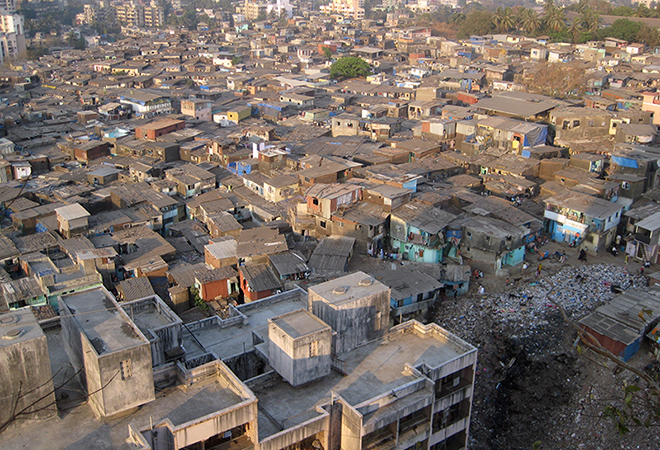
For a nation with immense geographical diversity, India has failed to put together a policy framework to realise the potential of its invaluable geological heritage. The condition of the 65-million year old ‘Gilbert Hill’, a hill made of columnar basalt, located in the dense and bustling Andheri suburb of Mumbai, is a stark example of the lack of societal and political vision and will to conserve and nurture such heritage.
There are only three such geographical structures in the entire world. Two of these are in the United States –‘Devils Postpile National Monument’ in California and ‘Devil’s Tower National Monument’ in Wyoming. The third, Gilbert Hill in Mumbai, was declared as ‘National Park’ under the Forest Act in 1952. In 2007, the hill was declared a Grade II heritage structure as well. However, the current condition of this highly encroached-upon natural wonder shows that neither its legal status as a National Park nor its inclusion in the heritage list has made any difference. This geological marvel, whose existence is older than humanity (which is approximately 13 million years old), is fighting for its existence in Mumbai’s concrete jungle.
The 225-feet Gilbert Hill has witnessed the evolution of mankind as also the evolution of present day Mumbai over the centuries. It is situated at a 10-minute walk from the Andheri railway station, which records one of the highest footfalls of approximately six lakh persons per day on the western suburban railway line. But hardly anybody knows about its natural and historic significance. The hill was formed following a volcanic eruption back in the Mesozoic period (252 to 65 million years ago). It was formed as a unique hill with vertical basalt pillars – making it resemble a block – as the basaltic lava cooled to form vertical instead of horizontal layers. These square and rectangular pillars are known as columnar basalt or laccolith. The vast flatlands of the Deccan plateau are also said to have been formed from volcanic lava that created the Gilbert Hill.
There is a debate over how Gilbert Hill got its name. Some say it has been named after an American geologist Grove Karl Gilbert who coined the term laccolith; whereas others say that the hill is named after the then British officer in charge of Andheri Taluka (Block). There are two temples on the hill namely Hanuman Mandir and Gaondevi Durga Devi Mandir, both of which can be accessed through stairs. Every year, people celebrate various festivals in these temples. According to folklore, centuries ago, there was dense forest around the hill. Even until 60 to 70 years ago, the area around the hill had dense vegetation. Today, the vegetation has given way to buildings and cheek by jowl slums. Though the Heritage rules mandate that entrances to all such sites should have an open space, the way to this hill is extremely narrow and teeming with slums. Firstly, not many know of its existence; and secondly, all the people living around are struggling for their own survival and hence not concerned about the hill. The only people who visit the site are scholars, historians and devotees of the shrines. The hill itself is getting eroded by the day due to increasing encroachments. Despite the erosion, the hill still covers an area of seven to eight square kilometres, whereas the top of the hill is spread over 8,000 to 10,000 square feet.
India urgently needs a concrete policy to safeguard such priceless – and in Gilbert Hill’s case, timeless – geological heritage.
An exhaustive list of such structures needs to be put together by the Geological Survey of India (GSI). This list can include rare and unusual rock formations, landforms depicting natural events of the past, significant fossil sites, etc. A sustainable conservation approach needs to be formulated similar to the one undertaken to preserve biodiversity. This calls for an active participation of the state and local governments.
The temple has a trust called the ‘Gaondevi Durga Devasthan’ which campaigns for disallowing construction around the hill. A few years ago, a local realty developer had proposed to demolish the hill for estate development. This was strongly opposed by people who are devotees of the Gaondevi temple on the hill. This highlights a special equation between the temple and the hill. Due to the temple, the hill has become lively and tourist-friendly. There is also a demand for the construction of a protective wall around the site. Such demands have been made for years to the government, but, besides minor reliefs, have failed to draw any response. The Maharashtra Tourism Development Corporation (MTDC) has not even taken proper notice of the site. If various government agencies realise the importance of this geographical wonder and show the will to conserve it, it is possible to maintain the site for posterity.
Geography lessons in school teach about the birth of planet earth, the various rocks it is made up of, etc. But no school goes the extra mile to teach that such rocks exist not just in books and classrooms, but also in the vicinity. Not a single school or college in Mumbai has attempted to conduct students’ tours of this marvel. This lack of awareness itself is a major reason for the Gilbert Hill’s sorry state. Significant efforts are needed to convince the society and the government machinery that sites like these contain the history of our land. Many Bollywood movies like ‘Waqt’ and ‘Sholay’ and even the critically-acclaimed multiple Oscar-winning movie ‘Slumdog Millionaire’ have been shot around this place. Sadly, its fate has not changed for the better. Gilbert Hill is still a long way from the glamour it deserves.
Geo-conservation should be taken into account in the process of land use planning. There needs to be implementation of a stringent legal framework to support all conservation efforts.
Educational outreach programmes need to be undertaken for officials, public representatives and the society at large. Academic institutions can play a major role in promoting the idea of protecting such valuable treasures of nature.
The Devil’s Tower and Devil’s Postpile in the US are international tourist attractions as they have been branded and showcased as earth’s rarest forms. Millions of tourists visit these sites annually. There are number of web pages and articles to promote these wonders worldwide. There is huge business of tourism and transport around these natural monuments. The efforts undertaken by the US administration to preserve and nurture its natural heritage serve as the best template that needs to be adopted for the conservation of such sites across India. However, for all of this to happen, it is imperative to think, converse and deliberate on such invaluable heritage, akin to the developed world. Else, it is only a matter of time that India will forever lose these invaluable assets of humanity.
The views expressed above belong to the author(s). ORF research and analyses now available on Telegram! Click here to access our curated content — blogs, longforms and interviews.




 PREV
PREV


